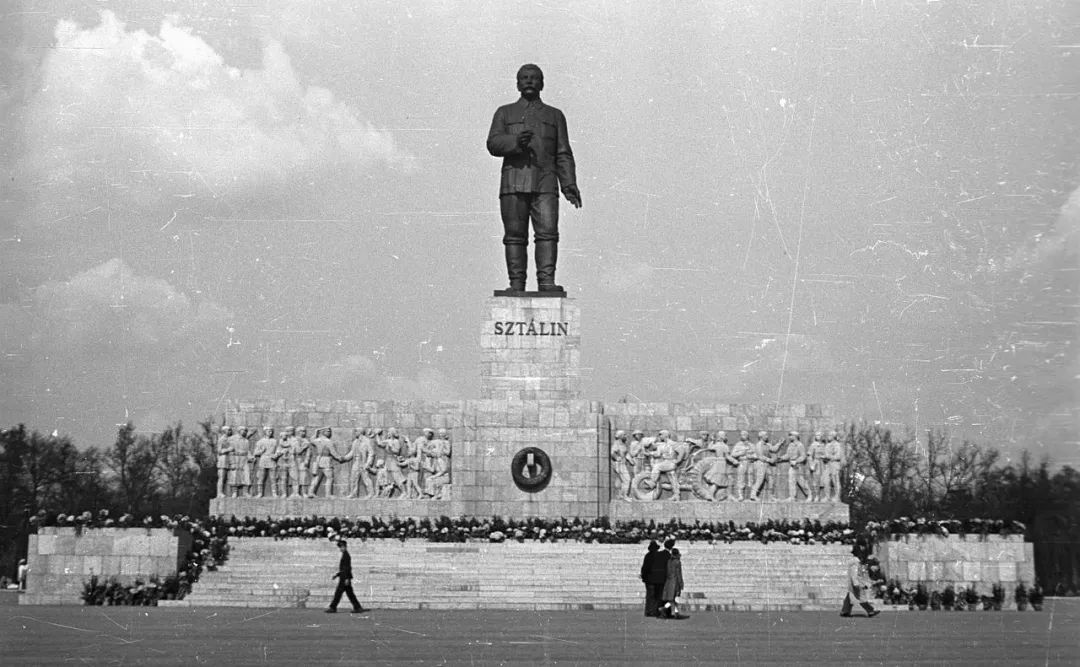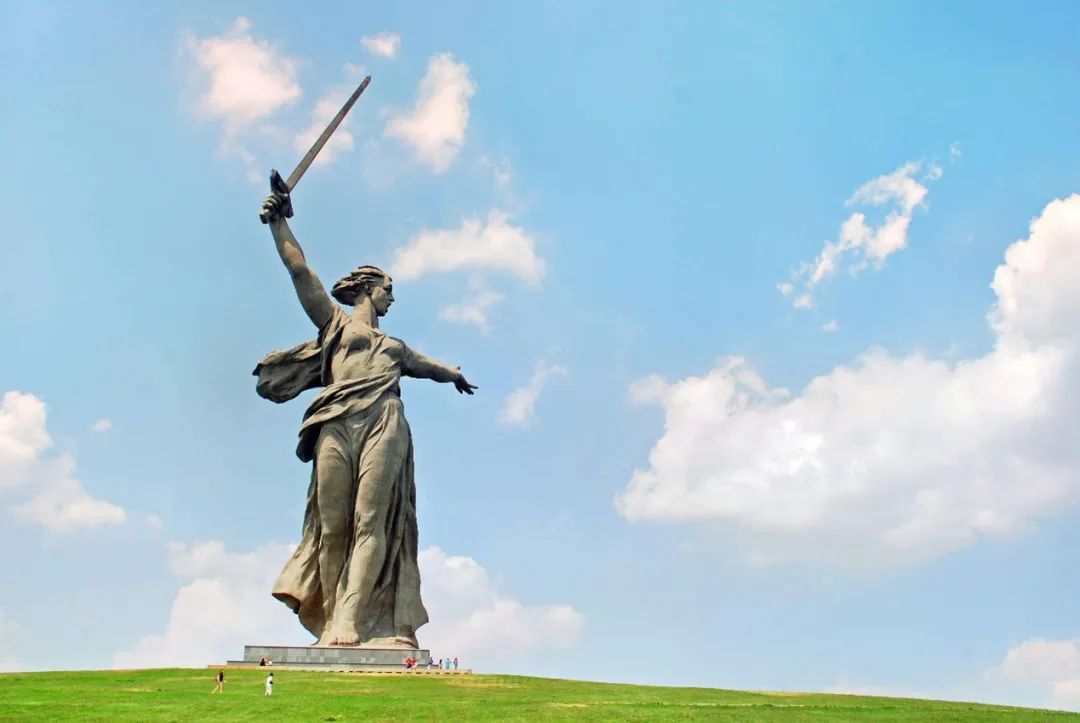- 河北普罗创意雕塑有限公司欢迎您,走进普罗,创意生活。
- 联系电话:16631106654
不管是从艺术,还是历史的角度来看,苏联出于宣传和纪念目的在其国内外修建的一系列雕塑,都在规模、艺术造诣、数量等方面做到了前无古人,后无来者。苏联解体后,这些雕像的归宿各不相同,又折射了其所在地的诸多现状,也是颇为有趣。
Whether from an artistic or historical point of view, a series of sculptures built by the Soviet Union at home and abroad for propaganda and commemorative purposes have achieved unprecedented and unprecedented in terms of scale, artistic attainment, and quantity. After the collapse of the Soviet Union, the fate of these statues varied, reflecting many of the current conditions of their location, which is also quite interesting.

匈牙利布达佩斯的斯大林像。
Statue of Stalin in Budapest, Hungary.


俄罗斯是世界上雕塑数量最多的国家之一,雕塑作为纪念意义和文化价值的重要载体,被俄罗斯的历届政权所重视。
Russia is one of the countries with the largest number of sculptures in the world, and sculpture as an important carrier of commemorative significance and cultural value has been valued by successive Russian regimes.
从沙俄时期开始,雕塑就是俄罗斯艺术的重要组成部分。1782年,圣彼得堡树立起了描绘彼得大帝骑马形象的《青铜骑士》雕塑(普希金的叙事诗《青铜骑士》便是讲述这尊雕像复活、带领军民反抗法国人侵略的故事),是俄罗斯的第一个纪念性雕塑,代表着俄罗斯的民族主义意识觉醒的开端。
Since the Tsarist period, sculpture has been an important part of Russian art. In 1782, St. Petersburg erected the sculpture “Bronze Horseman” depicting Peter the Great on horseback (Pushkin’s narrative poem “The Bronze Horseman” tells the story of the statue resurrected and led the army and people against French aggression), which was the first monumental sculpture in Russia and represented the beginning of the awakening of nationalist consciousness in Russia.

苏联建立之后,新生政权的领导人很快就认识到了纪念性质的雕像在宣传战线的巨大价值。1918年4月,列宁签署了《纪念碑宣传法令》,要求拆除广场和街道上的沙皇及其奴仆的那些象征旧的剥削权力的纪念碑,同时建立新的纪念碑。法令要求,新竖立的纪念碑包括无产阶级革命家和社会活动家、政治家、作家和诗人、科学家和哲学家、美术家和作曲家、演员等。该法令还要求纪念碑雕塑的外观需要民主决定,每一个纪念碑雕塑都是由数个艺术家竞争投稿、当地公民海选出来的。
After the establishment of the Soviet Union, the leaders of the nascent regime quickly recognized the great value of commemorative statues on the propaganda front. In April 1918, Lenin signed the Decree on the Propagation of Monuments, which demanded the demolition of the old monuments symbolizing the exploitative power of the Tsar and his servants in the squares and streets, and the erection of new monuments. The decree requires that the newly erected monuments include proletarian revolutionaries and social activists, politicians, writers and poets, scientists and philosophers, artists and composers, actors, etc. The decree also requires that the appearance of monumental sculptures be democratically decided, and that each monumental sculpture be submitted by several artists and selected by local citizens.
《纪念碑宣传法令》是一个新时代的开启,这个法令通过要求大范围在城市、纪念地等地建造雕塑,使苏俄、苏联艺术家们开始了一系列新艺术形式的探索。其中著名的有《第三国际纪念碑》(虽然并没有也不可能在彼得格勒市中心建起),代表着先锋艺术在苏联的尝试。《工人和集体农庄女庄员》,是1937年世博会中在苏联国家馆顶竖起的雕塑,这是世界上第一个不锈钢雕塑,也是第一个运用建筑工程学手段建造的巨型雕塑,代表着苏联战前的雕塑艺术的顶峰。
The Decree on the Propagation of Monuments was the beginning of a new era in which Soviet and Soviet artists began to explore a series of new art forms by requiring the large-scale construction of sculptures in cities, memorials, etc. The famous of these is the Monument to the Third International (although it was not and could not have been erected in the center of Petrograd), which represents an attempt at avant-garde art in the Soviet Union. “Workers and Collective Farm Ladies”, a sculpture erected on the roof of the Soviet State Pavilion at the 1937 World Expo, is the world’s first stainless steel sculpture and the first giant sculpture built using architectural engineering, representing the pinnacle of Soviet sculpture art before the war.


二战之后,为了纪念卫国战争的胜利,苏联官方开始了一系列新的“英雄主义”雕塑的建造,反映了战争、胜利、解放等题材,形成了一种新的艺术形式:纪念艺术综合体。这些纪念艺术综合体规模宏大、艺术感染力强,具有一种史诗感。纪念艺术综合体的开端便是《苏军解放柏林纪念碑》,以时间叙事呈现了卫国战争的史诗。除了纪念艺术综合体以外,单体雕塑也层出不穷,除了苏联境内每个城镇几乎都有的斯大林、列宁等苏联早期领导人的雕像以外,也出现了一些描绘本国历史人物的雕塑,例如1951年莫斯科的《高尔基纪念像》、1957年列宁格勒的《普希金纪念像》等等,在艺术上造诣很高。
After World War II, in order to commemorate the victory in the Great Patriotic War, the Soviet Union officially began the construction of a series of new “heroic” sculptures, reflecting the themes of war, victory, liberation and other themes, forming a new art form: the memorial art complex. These commemorative art complexes are grand in scale, highly artistically appealing, and have a sense of epic. The beginning of the commemorative art complex is the “Monument to the Liberation of Berlin by Soviet Troops”, which presents the epic poem of the Great Patriotic War in a chronological narrative. In addition to the statues of Stalin, Lenin and other early Soviet leaders that are almost in every town in the Soviet Union, there are also some sculptures depicting historical figures in their own countries, such as the “Gorky Memorial Statue” in Moscow in 1951, the “Pushkin Memorial Statue” in Leningrad in 1957, etc., which are highly accomplished in art.

随着苏联国力日益增强,在20世纪60至80年代,苏联及其卫星国、盟国境内涌现出了一批包括但不限于反映民族、国家历史的纪念性艺术综合体,规模体量极为惊人,是苏联整体国家实力的展现。例如《征服宇宙纪念碑》,高达102米。斯大林格勒马耶夫岗上的《祖国母亲在召唤》,高达85米,代表了纪念艺术综合体的最高水平之一。
With the increasing national strength of the Soviet Union, in the 60s and 80s of the 20th century, a number of monumental art complexes including but not limited to reflecting the history of the nation and the country emerged in the territory of the Soviet Union and its satellite countries and allies. For example, the “Monument to the Conquest of the Universe”, which is 102 meters high. “Mother Motherland is Calling” on the Maev post in Stalingrad, up to 85 meters, represents one of the highest levels of the monumental art complex.



苏联的雕塑艺术既继承了俄罗斯民族的文化艺术传统,又有着官方的重视,因此才有了巨量、巨型的星罗棋布于苏东各国的诸多苏联雕像。那么,在苏联这个国家不复存在之后,苏联的雕像们,现在怎么样了?
The sculpture art of the Soviet Union not only inherits the cultural and artistic traditions of the Russian nation, but also has official attention, so there are many huge and huge Soviet statues scattered in the countries of the Soviet Union and Eastern Europe. Well, after the state of the USSR ceased to exist, what happened to the statues of the USSR now?

上面所列举的苏联雕塑,大多都是具有相当大的美学价值与历史纪念意义的,因而基本上保存完好。由于这种纪念性艺术综合体的丰富感染力,在后苏联时代,全世界各国都有仿照苏联纪念性艺术综合体的雕塑群出现。
Most of the Soviet sculptures listed above have considerable aesthetic value and historical monumental significance, so they are basically well preserved. Due to the rich appeal of this monumental art complex, in the post-Soviet era, sculpture groups modeled on the Soviet monumental art complex appeared in countries all over the world.
俄罗斯在独立之后就在不停建造这类雕塑,以雕塑重现历史的方式唤醒俄罗斯民族意识的认同。例如在1995年建成的莫斯科《胜利女神纪念碑》,采用了民族叙事的方式,代表着当代俄罗斯的民族意识复兴、社会转型。
After independence, Russia continued to build such sculptures, awakening the identity of the Russian national consciousness in a way that recreates history. For example, the “Monument to the Goddess of Victory” in Moscow, completed in 1995, adopts the method of national narrative and represents the revival of national consciousness and social transformation in contemporary Russia.

朝鲜作为继承了苏联的传统的国家,不仅在其国内建造了众多领导人雕像,还向国外出口了许多雕塑创汇。朝鲜“万寿台工作室”的巨型纪念性艺术综合体雕塑,也可以算是一种苏联雕塑的继承者。
As a country that inherits the traditions of the Soviet Union, North Korea not only built many statues of leaders in its own country, but also exported many sculptures abroad to earn foreign exchange. The giant monumental art complex sculpture of the North Korean “Mansudae Studio” can also be regarded as the successor of a kind of Soviet sculpture.

而能够唤醒民族意识的苏联雕塑,也被前苏东国家完好地保留,甚至在今日已成为了本国的民族象征之一。这种雕塑当中尤为令人印象深刻的就是几个“祖国母亲”雕塑,分别是位于格鲁吉亚首都第比利斯的《格鲁吉亚母亲》、乌克兰首都基辅的《祖国母亲》、亚美尼亚首都耶烈万的《亚美尼亚母亲》。
The Soviet sculptures that can awaken the national consciousness have also been well preserved by the former Soviet and Eastern countries, and even today have become one of the national symbols of the country. Particularly impressive are several “Motherland” sculptures, namely “Mother Georgia” in Tbilisi, Georgia, Kiev, Ukraine, and “Armenian Motherland” in Yerevan in Armenia.
《格鲁吉亚母亲》建于1958年,是为了庆祝格鲁吉亚建国1500年而立。它不似其他纪念卫国战争的雕塑巨大,只有20米高,外形简约,具有现代主义风格,但是其左手执酒碗、右手持利剑的动作,彰显了格鲁吉亚热情好客、追求独立的民族精神。
Mother Georgia was built in 1958 to celebrate the 1500th anniversary of the founding of Georgia. It is not as huge as other sculptures commemorating the Great Patriotic War, only 20 meters high, simple in appearance, with a modernist style, but its left hand holding a wine bowl and right hand holding a sharp sword highlights the Georgian national spirit of hospitality and independence.

建于1950年的《亚美尼亚母亲》雕塑也承载了亚美尼亚的民族意识,其执利剑,怒发冲冠,神色可怖,像是亚美尼亚民族在经历了上千年的苦难之后怨气的集中爆发。
The sculpture “Mother Armenia”, built in 1950, also carries the national consciousness of Armenia, with a sharp sword, angry and terrifying look, like a concentrated outbreak of resentment of the Armenian nation after thousands of years of suffering.

《祖国母亲》位于基辅的市中心,乌克兰母亲河第聂伯河右岸,于1981年为了纪念卫国战争当中的基辅会战而建造,也是祖国母亲雕塑当中最有名的一个。她左手持刻有苏联国徽的盾牌,右手持剑,神情坚毅。雕像下方是乌克兰爱国战争纪念馆,拥有超过三十万个展品,且是11600名战士与民工的衣冠冢。
Located in the center of Kiev, on the right bank of the Dnieper River, Ukraine’s mother river, “Motherland” was built in 1981 to commemorate the Battle of Kiev in the Great Patriotic War, and is also one of the most famous sculptures of Motherland. She held a shield engraved with the Soviet coat of arms in her left hand and a sword in her right, with a resolute expression. Below the statue is the Ukrainian Patriotic War Memorial, with more than 300,000 exhibits and the clothes of 11,600 soldiers and migrant workers.
值得一提的是,这尊雕塑耗资不菲,在建造当时便引发了巨大争议,被称为“勃列日涅夫的女儿”,62米高,由钛合金和不锈钢制成。其国内反对者认为这笔巨资应当被用在更有价值的地方。2015年,乌克兰议会通过决议,清除其国内一切苏联标志,但是由于《祖国母亲》是战争纪念馆而幸免,不过其盾牌上的苏联国徽被很多人认为应当拆除。专家表示,如果拆除苏联国徽,将会造成雕像整体失衡倾覆,因此争议搁置至今。
It is worth mentioning that the sculpture was expensive and caused great controversy at the time of its construction, and is called “Brezhnev’s daughter”, 62 meters tall and made of titanium alloy and stainless steel. Its domestic opponents argue that the huge sums should be spent where it is more valuable. In 2015, Ukraine’s parliament passed a resolution to remove all Soviet symbols from the country, but was spared because Mother Motherland is a war memorial, although the Soviet coat of arms on its shield is considered by many to be removed. Experts said that if the Soviet emblem were removed, the statue would be overturned as a whole, so the controversy has been put on hold.


前南斯拉夫国家克罗地亚的《革命纪念碑》,由铁托下令建造,用来纪念南斯拉夫游击队对抗纳粹的事迹。这尊雕塑具有后现代主义风格,意象大胆又张扬。
The “Monument to the Revolution in the former Yugoslav state of Croatia”, built by Tito’s order, commemorates the deeds of the Yugoslav partisans against the Nazis. The sculpture has a postmodernist style, with bold and bold imagery.

除了具有美学价值与民族意识的苏联雕塑外,苏联还将列宁像布满了苏东国家的大地。这些列宁像没有什么太多的艺术价值,只是是苏联的象征,因此各个国家对待列宁像的态度也折射了其对苏联那段历史的态度。
In addition to Soviet sculptures with aesthetic value and national consciousness, the Soviet Union also covered the land of Lenin with statues of the Soviet Union and Eastern Europe. These statues of Lenin do not have much artistic value, but are symbols of the Soviet Union, so the attitude of various countries towards Lenin statues also reflects their attitude towards the history of the Soviet Union.
俄罗斯的列宁像作为苏联历史的见证被大多保留。在俄罗斯西伯利亚地区的荒僻小城乌兰乌德,有一尊世界上最大的列宁头像,高达7米,重42吨,看起来古怪且突兀。它如今是游客的打卡圣地与当地的地标。这尊雕像是乌兰乌德地方为了讨好赫鲁晓夫,在其秘密报告去斯大林化后火速建成的。
Statues of Lenin are mostly preserved as witnesses to Soviet history. In the deserted city of Ulan-Ude in Russia’s Siberian region, there is the world’s largest Lenin head, 7 meters tall and weighing 42 tons, which looks strange and abrupt. It is now a tourist mecca and a local landmark. The statue was quickly erected by the Ulan-Ude locality in order to curry favor with Khrushchev after his secret report on de-Stalinization.

1958年苏联科考队员率先抵达南极“难抵极”建立了科考站,他们还将列宁像树立在科考站的上方,面朝莫斯科的方向,使其成为世界上最孤独的雕像。 世事无常,石像却永存。也许直到人类毁灭,南极的那个列宁像还会依旧存在,顽强地昭告着宇宙,20世纪的那段历史。
Soviet expedition members were the first to arrive at Antarctica to set up a research station, and they also erected a statue of Lenin above the research station, facing the direction of Moscow, making it the loneliest statue in the world. The world is impermanent, but the stone statue lives on. Perhaps until the destruction of mankind, the image of Lenin in Antarctica will still exist, tenaciously telling the universe, the history of the 20th century.

普罗创意
河北普罗创意雕塑有限公司业务范围包括:雕塑设计、文创设计、景观设计,石材雕塑、青铜雕塑、不锈钢雕塑等。 The business scope of Hebei Pro creative sculpture Co., Ltd. includes: sculpture design, cultural and creative design, landscape design, stone sculpture, bronze sculpture, stainless steel sculpture, etc.
© 2025. All Rights Reserved. 冀ICP备2021027186号  冀公网安备13010502002022
冀公网安备13010502002022




